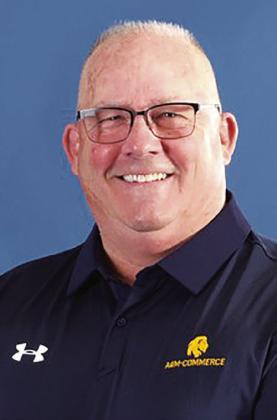Heat related deaths caused sports officials to quit having two-a-day practices. Although it is not considered two-a-day practices, state athletic affiliations allow a walk-through practice along with a regular practice. Of course, these practices must be separated.
Is this helpful in preparing athletes for the fall sports competition? Or is this a way to try to prevent some coaches from overworking their student-athletes and endangering lives? Either way, heat related deaths have decreased in recent years.
It is easily understood that without organized spring and summer workouts, athletes need proper conditioning to prepare for the fall season. State and national organizations regulating sport activities allow two-a-days by allowing a walk-through practice. I believe multiple day practices are not the problem with well-educated coaches.
Heat-related illnesses and deaths are blamed on too much practice. Instead of looking at proper ways to utilize multiple practices within each individual school or college, organizations regulating sports made a universal decision. One size does not fit all. Heat related illnesses are caused by the rise of core body temperature.
Different geographical climates require different practice methods for conditioning. Body core temperatures rise during activity. Excessively hot and humid conditions, equipment restricting cooling of the body, lack of acclimatizing the body and intense workouts are factors contributing to heat related illnesses. Those issues still exist regardless of how many practices are conducted.
There is a perception two-a-day practices are harmful to athletes and practicing in the heat is not good. This is not true. Acclimatizing to the heat (climate conditions) is important in preparing athletes. Heat related illnesses are not necessarily related to the number of practices. What is harmful to the athlete is the body not being acclimated to the weather (climate) conditions. This causes the rise of core body temperature.
Hydration is especially important to keep athletes from becoming overheated. An elevated body temperature spells dangers for the athlete. Becoming dehydrated is one of the fastest ways to raise your body temperature. Therefore, practicing at various times of the day with proper hydration can be helpful in acclimatizing the body.
Why have two-a-day practices? Because it is important to have athletes practice and have walkthrough practices multiple times in a day, allowing athletes to acclimate to the heat. National organizations are now spelling out how many hours per day are allowable for practice. This allows coaches and administrators to make wise choices for their teams.
Acclimatizing the body is the key to preventing heat related illness. Obviously, it is important to acclimate to the climate in which the athlete will be exposed in working and playing conditions. Climate conditions are different throughout the United States and require different methods to acclimatize athletes to the specific conditions they will participate in. Remember, one size does not fit all.
Thought for the week — “In the end, the game comes down to one thing: man against man.” Sam Huff
Dr. Jack Welch is a college football coach. He holds a Doctor of Education degree and has been a college and high school football coach for over 40 years. He can be reached at jackwelch1975@gmail.com.


